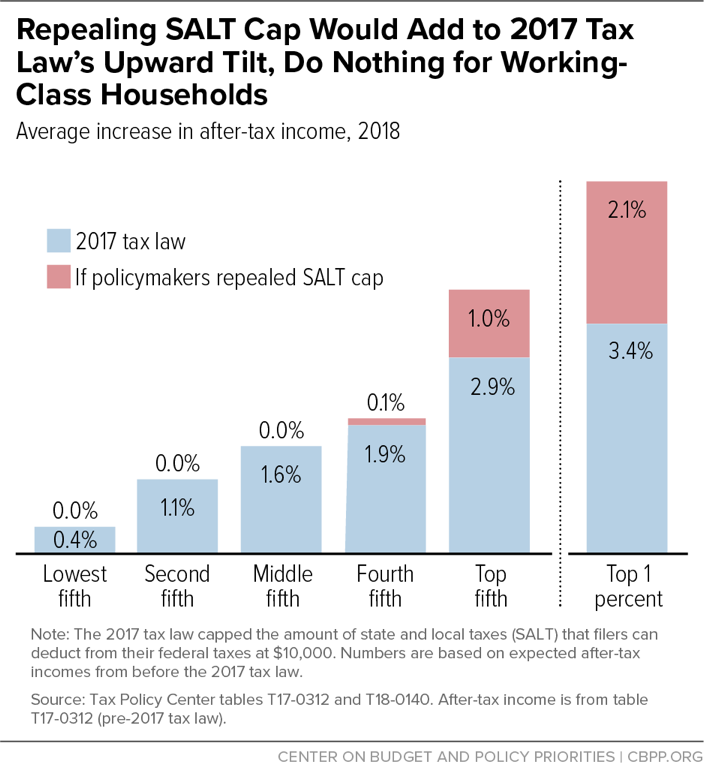BEYOND THE NUMBERS
The $10,000 cap that last year’s tax bill placed on the federal deduction for state and local taxes (SALT) overwhelmingly affects people at the top rather than the middle, new Tax Policy Center (TPC) estimates show, mirroring earlier estimates from the Institute on Taxation and Economic Policy. As a result, TPC finds, repealing the cap without putting anything in its place would deliver a large federal tax cut primarily to the most well-off.
Households in the top 1 percent (with pre-tax incomes above about $755,000) would receive an average tax cut of $31,380, raising their after-tax income by 2.1 percent. In contrast, households in the middle 60 percent (with pre-tax incomes between about $25,000 and $153,000) would see little change: a tax cut of $20 and a rise in after-tax income of less than 0.1 percent, on average. (Households in the bottom 20 percent would effectively receive no tax reduction.)
The top 1 percent of households would receive more than 56 percent of the tax cut from repeal, TPC finds, and the top 20 percent would receive 96 percent. Repealing the cap without making other changes in the tax law would thus compound both the 2017 tax law’s cost and its tilt to the most affluent:
- As it now stands, the law will cost $1.9 trillion over ten years. Repealing the cap would add another $621 billon.
- Similarly, the law as it stands will provide the top 1 percent with an average tax cut of $51,140 in 2018, equal to a 3.4 percent increase in after-tax income. Repealing the cap would raise their annual tax cut to more than $80,000, for a gain of more than 5 percent in after-tax income.
If policymakers repealed the SALT cap and replaced it with a provision that raised the same amount of revenue from high-income filers, the result would be a wash. It wouldn’t reduce the 2017 tax law’s overall cost or regressive tilt.
At the same time, the SALT cap could make it harder for some states and localities to raise revenues from progressive tax sources if it reduces support for state and local taxes on the part of higher-income filers. Some states may need to address this challenge as part of a more comprehensive response to the federal tax changes. But the TPC findings deserve serious consideration in future tax policy debates.

